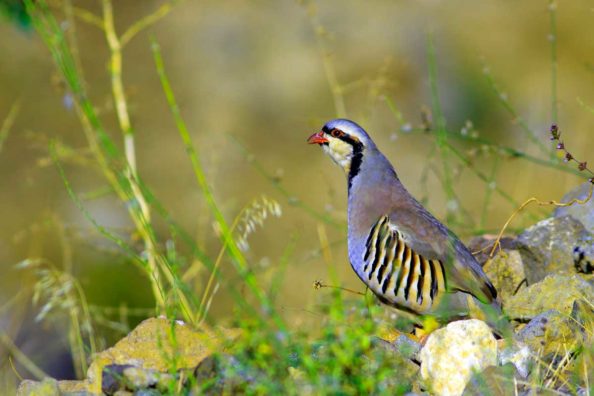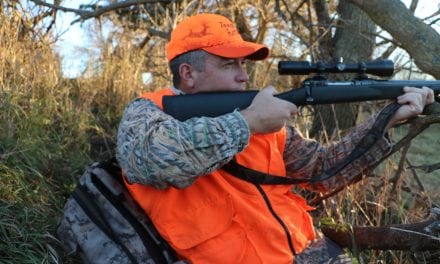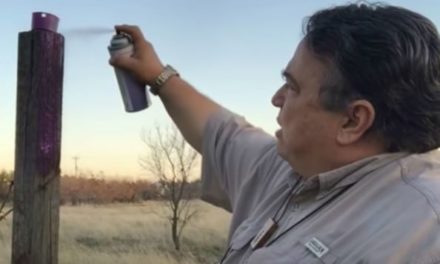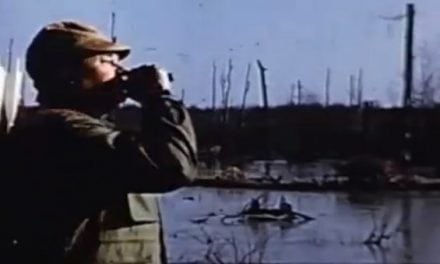
Here’s some info on what the Chukar is, where it can be found, and how to hunt for them.
The first time I ever went Chukar hunting was in a field next to my friend’s house in upstate New York. If you don’t know, the Chukar is not native to New York State. In fact, this game bird is native to the Middle East and southern Asia, from which the Chukar was brought as a game bird to North America.
So how did I come to hunt for them in New York? Well, the simple answer is that it was not so much a Chukar hunt, but more so a training exercise for my upland bird dog at the time. Chukars, like the pheasants that they are related to, are well adapted to being pen raised for use in dog training and on game preserves, but they are most famous as an upland game bird in the higher altitudes of the American northwest.
Chukars are known to be quite tasty with a meat that some say resembles a Cornish game hen. Maybe the best part is that they are a worthy game bird when it comes to hunting them, especially since they group in coveys. The downside is that when disturbed, the Chukar prefers to run rather than fly.
Profiling the Chukar Partridge
The chukar partridge (Alectoris chukar), or simply the chukar, is an upland gamebird in the pheasant family. Some say Chukars are one of the most fun birds to hunt, despite their range and difficulty getting to them.
It can even be said that they are an invasive bird since they are a non-native species in North America. But they have adapted so well and are so much fun to hunt, that we can view them differently than say the wild hog or Burmese python.
Chukars are about the same size as the more well-known ruffed grouse, but have a very white face with a black ring of feathers around its upper throat and eyes and a light rosy beak. The Chukar is barred across its chest.
Chukars feed mostly on the ground, but can and will jump into trees and shrubs to forage. As with most animals, their diet varies with the season: berries, insects, and leaves in the summer, and in the winter they feed mostly on seeds, such as from cheatgrass and Russian thistle.
In the summer breeding season, the male displays courtship by tilting his head and circling the female. The males sometimes chase the females with their head and wing lowered and neck fluffed.
Their nests are generally sheltered by ferns or small bushes and then placed in a depression with substantial lining of grass, twigs, feathers, possibly on a rocky hillside under an overhanging rock formation.
The female lays roughly 10-15 pale yellow eggs that incubate for about 25 days. In captivity they can generally lay an egg each day during the breeding season if the eggs are collected on a daily basis, making them a great game bird for training purposes and wild game clubs and game farms.
Chukar Range
Wild Chukars in the U.S. are found in eastern Oregon and Washington, Utah, Idaho, throughout Nevada, and in parts of California. They do exist north of the border into Canada, but are more uncommon there. The upside to Chukars in some areas is that their habitat is generally a steep, rocky, very dry area unsuitable for development, agriculture or other commercial uses.
In southern Idaho, they prefer arid areas with sagebrush, and they are found in Nevada as high as 12,000 feet in the White Mountains, within the Boundary Peak Wilderness.
Chukar Hunting
The challenge list for hunting these birds is virtually the same for every state where you can hunt them: good boots, a water bottle, and enough shotgun shells to stay afield all day. A hunter usually need to be in good physical condition since the areas where they live are steep, rough, and remote.
According to the Oregon Department of Fish & Wildlife, “Important chukar areas in Oregon include the lower Deschutes and John Day Rivers, the Snake River and several of its tributaries, Malheur and Owyhee River drainages, and mountain ranges including Steens, Hart and Trout Creek mountains.”
In Idaho Chukars thrive on large tracts of public hunting grounds and are available to anyone willing to make the effort to hunt them. And in Nevada, “The Silver State’s combination of a high chukar population, a long season, and a bag limit of six, can make for some of the best chukar hunting in the U.S.”
A well known saying among chukar hunters is “The first time you hunt chukar is for fun, every time after that is for revenge.”
As hunters, we know full well the highs of success and the lows of failure. When Chukar hunting, the hunter has to expect to be able to find birds with a lot of effort, only to watch them fly away safely over and over.
In the early part of the season, chukar stay near water, often lower down in the valleys. By mid-season finding them up higher and on south-facing slopes where they can warm themselves on the rock outcroppings that absorb more sunlight. In winter, look for them in the rock outcroppings around the sage out of the wind on the leeward sides of ridges.
Hunting dogs are a major bonus in Chukar hunting. Pointing breeds work great for hunting Chukars, especially finished gun dogs. A bird dog needs to be in peak physical condition, just like the hunter does, as the birds tend to live in remote areas where the footing can be dangerous for both man and dog. While you should bring a first aid kit for you and your hunting partner, also bring one that is canine-specific to be ready for cuts and torn toenails. Certainly carry extra water for your dog as well.
Depending on the season, hunters may do better to carry heavier clothing in case the weather changes while they are far from the road. There’s and old saying for hunters everywhere and in every scenario: “I’d rather be looking at it than looking for it.”
As far as firearms, the choices are vast. Since Chukar hunting is done at higher altitudes, lighter styles like the .410 and 20 gauge come to mind for distance of carrying, but for most hunters they simply carry what they are used to. A 12 gauge will work too.
Chukar Hunting
For those that can’t or wont ever be able to travel to one of these fine states for a Chukar hunt, it seems that most every other state in the union has game clubs and preserves that breed and release the Chukar. Here, a hunter can do some wingshooting close to home, work their favorite hunting dog, and be home in time for a Chukar dinner.
For many hunters that are interested in starting a pup as a gun dog, the valuable Chukar has a great tendency to live in captivity thereby giving a young dog many training points and flushes to get them ready for the real thing, or even for a hunt test as a member of your favorite hunting organization.
On public land, bird hunting for Chukar may have no match. So much Chukar habitat is located on prime lands that are open to the public and easily accessible for the walk-in crowd. Upland bird hunting for wild Chukar can put bird hunters on track to see some of the most beautiful landscapes that the United States has to offer.
Looking for a little more or even hot lunch for your hunting blind? Follow my webpage, or on Facebook and Twitter.
NEXT: FLUSHING AND FALLING: AN UPLAND SEASON OF UPS AND DOWNS
The post Chukar Hunting: What You Need to Know Before You Go appeared first on Wide Open Spaces.
















